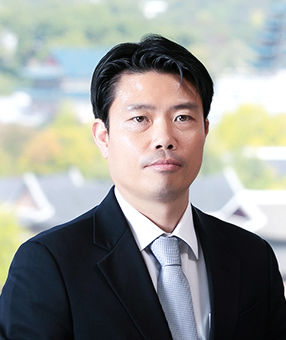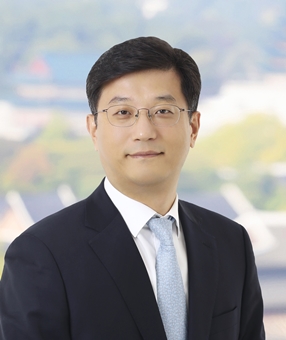On October 7, 2022, the Bureau of Industrial Security (the “BIS”) of the U.S. Department of Commerce, announced a new policy to tighten export controls in order to limit China’s capacity to produce advanced semiconductor chips and implemented various measures, including amending the Export Administration Regulations (the “EAR”). Apart from the existing re-export control, this policy mainly covers (i) the additions and revisions to the Commerce Control List (the “CCL”), (ii) the expansion of the Foreign Direct Product (the “FDP”) rules, (iii) the establishment of new end-use controls related to manufacturing supercomputers and semiconductors, and (iv) the tightened management of relevant parties. Since such changes may significantly impact Korean enterprises in associated industries, it is necessary to check the details of the policy and prepare for potential risks.
1. Amendment to the CCL to Expand Controlled Items
First, certain advanced computing chips (Export Control Classification Number “ECCN” 3A090) and computers, electronic assemblies and components (ECCN 4A090) containing such chips were newly added to the CCL, and associated software and technologies became subject to control under ECCNs 3D001, 3E001, 4D090 and 4E001. Here, advanced chips refer to integrated circuits (“ICs”) that have an aggregate bidirectional transfer rate over all inputs and outputs of 600 Gbyte/s or more, and whose bit length per operation multiplied by processing performance measured in Tera Operations Per Second (“TOPS”) exceeds a specified value.
Secondly, certain advanced semiconductor manufacturing equipment (ECCN 3B090) and related software and technology (ECCNs 3D001 and 3E001) were also recently added to the CCL. These include electrochemical deposition (ECD), chemical vapor deposition (CVD), atomic layer deposition (ALD), and physical vapor deposition (PVD) equipment, as well as the associated software and technologies.
These newly added items are controlled for regional stability (hereby referred to as “RS”) reasons and require a license for export, re-export and (in-country) transfer to China. In principle, most license applications for items controlled under this RS control will be reviewed under a presumption of denial. An exception to the presumption of denial applies to license applications for semiconductor manufacturing items destined to end users located in China that are headquartered in the United States or in a country within the Country Groups A:5 (e.g., Republic of Korea) or A:6, and such license applications will be reviewed on a case-by-case basis, taking into account factors including technology level, customers and compliance plans.
2. Expanding the Entity List FDP Rule and Establishing Two New FDP Rules
|
(1) |
Entity List FDP Rule |
|
(2) |
New Advanced Computing FDP Rule |
-
Product scope: Foreign products that are (i) either a direct product of a certain technology or software subject to the EAR and specified in 19 ECCNs or are produced by any plant or major component of a plant when the plant or major component is itself a direct product of a US-origin software or technology specified in the same group of ECCNs, and (ii) either specified in ECCN 3A090, 3E001 (for 3A090), 4A090 or 4E001 (for 4A090), or identifiable as an IC, computer, electronic assembly or component specified elsewhere on the CCL which meets the limit in the performance parameters of ECCN 3A090 or 4A090.
-
End-user scope: There is knowledge that either the item is (i) destined for China or will be incorporated into any non-EAR99 part, component, computer, or equipment that is destined for China; or (ii) a technology developed by an entity headquartered in China for the production of a mask, IC wafer or a die.
|
(3) |
New Supercomputer End-User FDP Rule |
-
Product scope: Foreign products that are (i) either a direct product of a certain technology or software subject to the EAR and specified in 18 ECCNs, or (ii) produced by any plant or major component of a plant when the plant or major component is itself a direct product of a US-origin software or technology specified in 17 ECCNs.
-
End-user scope: There is knowledge that either the item is (i) used in the design, development, production, operation, installation, maintenance, repair, overhaul or refurbishing of a supercomputer located in or destined to China, or (ii) incorporated into, or used in the development or production of any part, component or equipment that will be used in a supercomputer located in China or destined for China.
3. New End-Use Control for Semiconductor Manufacturing and Supercomputer
|
(1) |
Semiconductor Manufacturing End-User Controls |
-
Any item subject to the EAR when there is knowledge that the item is destined for end use in the development or production of ICs at a semiconductor fabrication plant (a “fab”) located in China that fabricates ICs meeting any of the following criteria:
- Logic ICs using a non-planar transistor architecture or with a production technology node of 16/14nm or less.
- NAND memory ICs with 128 layers or more.
- DRAM ICs using a production technology node of 18nm half-pitch or less. -
Any item subject to the EAR and controlled under an ECCN in Product Groups B, C, D or E (i.e., equipment, materials, software, and technology) in Category 3 of the CCL when there is knowledge that the item will be used in the development of production of ICs at a fab located in China that fabricates ICs, but the exporter does not know whether such fab fabricates ICs that meet the technical criteria mentioned above.
-
Any item subject to the EAR when there is knowledge that the item is destined for end use in the development or production in China of any parts, components, or equipment specified under ECCN 3B001, 3B002, 3B090, 3B661, 3B991 or 3B992.
|
(2) |
Supercomputer End-User Controls |
-
ICs subject to the EAR and specified in ECCNs 3A001, 3A991, 4A994, 5A002, 5A004, or 5A992.
-
Computers, electronic assemblies, or components subject to the EAR.
4. Revisions to the Entity List and Unverified List
The BIS made it clear that if it is prevented from determining compliance with the EAR by an entity due to the sustained lack of cooperation by the entity or a host government, such entity may be designated on the Entity List. The revision clarifies that the BIS’s inability to conduct timely end-use checks of an entity on the Unverified List (the “UVL”) due to lack of cooperation not only by the entity but also by the host government may result in a determination that the entity should be designated on the Entity List. Any addition to, removal from or other modification to the Entity List shall be subject to decisions by the End-User Review Committee, composed of representatives of the Department of Commerce, State, Defense, Energy and, where appropriate, the Treasury.
Along with the revisions to the regulations, 31 entities in China, including Yantze Memory Technologies Co. (“YMTC”), are newly listed in the UVL. Additionally, 28 Chinese supercomputer, military and WMD-related entities, which were already listed on the Entity List, are now classified in footnote 4 to which the revised Entity List FDP rule described above applies. Some of the companies on the UVL, including YMTC, were moved to the Entity List as of December 16, 2022.
5. Impact on Korean Companies
Considering the scope of the amendments and the U.S. Government’s commitment to implementing its controls, the recent US export controls against China are the strongest export controls the U.S. has taken against China. The 2020 Huawei restriction targeted only one company and revised the Entity List FDP rule only; nevertheless, it had a tremendous impact on the international community. The measures taken in October 2022 targeted China overall, amended the CCL itself, introduced multiple FDP rules, and included extensive controls based on end-users. As a result, far greater impact on Korean companies is anticipated.
First of all, while the semiconductor fabrication facilities of Korean companies located in China are subject to case-by-case reviews, Samsung Electronics’ Xi’an NAND flash production line, SK Hynix’s Wuxi DRAM plant, and Dalian’s NAND flash plant have been given a one-year grace period. However, as only Samsung and SK Hynix, among Korean companies in China, are subject to such grace periods, it is necessary for other Korean companies to check closely whether their exports are subject to U.S. export controls, and whether end users and end uses may require a license from the BIS.
According to foreign media, the U.S. Government is discussing restrictions on exports of semiconductor equipment to China, with the governments of Japan and the Netherlands, and major companies in those countries. In May, President Biden and President Yoon Seok-Yeol announced that the two countries would strengthen cooperation in export control and launched the U.S.-KOREA dual-use item export control working group. Changes to the global semiconductor supply chain have created uncertainties and vulnerabilities, making it all the more important for Korean companies to accurately and promptly identify and analyze updates in U.S. export controls and related policies.
Related Topics
#Export Control #China #Semiconductors #2022 Issue 4 #Newsletter












